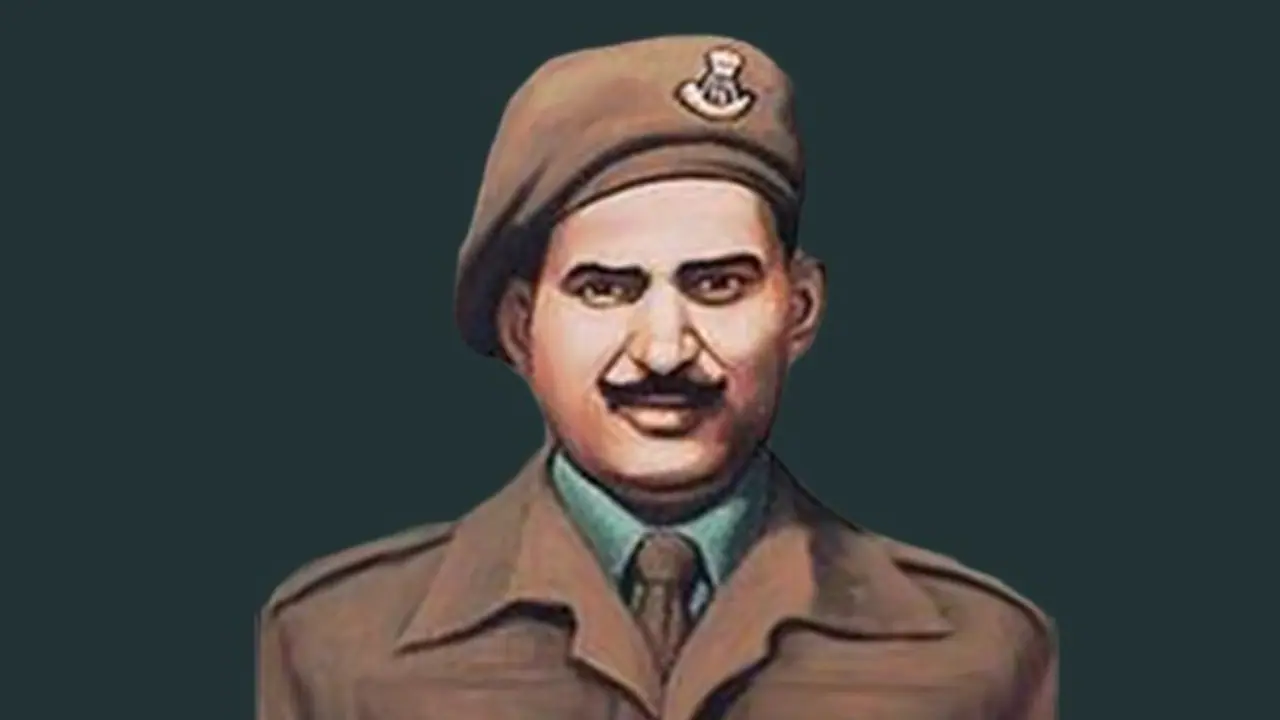Seeing more than half of the section killed or wounded, Havaldar Piru Singh did not lose courage. With battle cries, he encouraged the remaining men and rushed forward with great determination onto the nearest enemy MMG position
New Delhi: Rajputana Rifles still remembers the valour of Company Havaldar Major (CHM) Piru Singh Shekhawat who gave his life to save Kashmir. Piru Singh was born on May 20, 1918, in Jhunjhunu Rajasthan who fought till his last breath and brought Pakistani forces to their knees. He was posthumously awarded the Param Vir Chakra, India's highest award for valour in the face of the enemy.
He was born to a Rajput military family and both his father and grandfather were associated with the army. As a kid, he always wanted to join the forces but was rejected twice as he was a minor, but as soon he turned 19, he joined the Indian Army. It was on May 20, 1936, he became the member of 6 Rajputana Rifles and went, later on, to join the British Indian Army and was allocated to the 1st Punjab Regiment.

Post-independence, he actively took part in the Indo-Pakistani War of 1947, extending his full support for the Indian Army's 6th Rajputana Rifles. During the fierce battle, Piru Singh was part of the leading section of a company that was allocated to capture a Pakistani post at Tithwal, in Jammu and Kashmir.
South of Tithwal, 'D' Company, of which Piru Singh was Havildar Major, was detailed to attack and capture an enemy occupied hill feature. The enemy had well dug-in positions and had sited his medium machine guns (MMGs) to cover all possible approaches. As the attack advanced, it was met with heavy MMG fire from both flanks. Volleys of grenades were hurled down from enemy bunkers.
Seeing more than half of the section killed or wounded, he did not lose courage. With battle cries, he encouraged the remaining men and rushed forward with great determination onto the nearest enemy MMG position. Grenade splinters ripping his clothes and wounding him at several places; he continued to advance with least regard for his safety.
He was on top of the MMG position wounding the gun crew with Sten gun fire. With complete disregard to his bleeding wounds, he made a mad jump on the MMG crew bayoneting them to death, thus silencing the gun fire.
It was then that he realized that he was the sole survivor of the section, the rest of them either dead or wounded. Another grenade thrown at him wounded him in the face. With blood dripping from his face wounds and from his eyes, he crawled out of the trench, hurling grenades at the next enemy position. With a loud battle cry, he jumped on the occupants of the next trench, bayoneting two to death. This action was witnessed by the 'C' Company Commander, who was directing fire in support of the attacking company.
As Havildar Major Piru Singh emerged out of the second trench to charge the third enemy bunker, he was hit in the head by a bullet and was seen dropping on the edge of the enemy trench. There was an explosion in the trench, which showed that his grenade had done its work. By then CHM Piru Singh's wounds had proved fatal. He had paid with his life for his singularly brave act, but he had left for the rest of his comrades a unique example of single-handed and determined cold courage.
